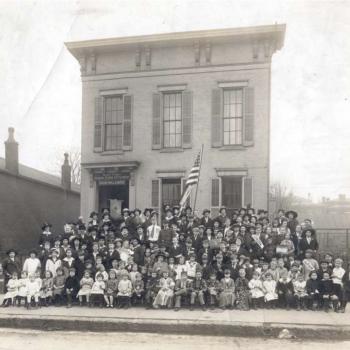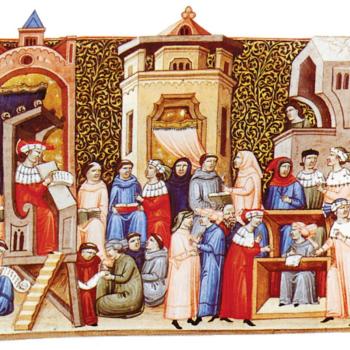Last month I asked whether pluralism can work in American higher education. What are the possibilities? What are the potential pitfalls? Today I want to ask what might be an even more intriguing question: Can pluralism work in Christian higher education? What would that even mean? To explore these questions, I’m thinking in conversation with George Marsden’s excellent Soul of the American University Revisited: From Protestant to Postsecular.
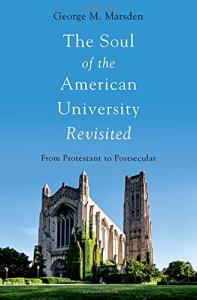 As I explored last time, in his updated 2021 edition of his original 1994 Soul of the American University Marsden argues in a new final chapter before the new epilogue that commitment to diversity is the only moral commitment left in many secular colleges and universities. As I summarized, he likewise argues that there are some real benefits to this commitment:
As I explored last time, in his updated 2021 edition of his original 1994 Soul of the American University Marsden argues in a new final chapter before the new epilogue that commitment to diversity is the only moral commitment left in many secular colleges and universities. As I summarized, he likewise argues that there are some real benefits to this commitment:
Even at institutions that are mostly concerned with setting students up for economic success, this commitment at least works to grant this opportunity to more people. Diversity as a framework also lends itself to the very sort of ideological pluralism that Marsden called for in the first edition of Soul, namely the opportunity for explicit faith perspectives to have a seat at the table of scholarly conversation. Plus, a commitment to ideological and social diversity is necessary for a modern democracy to succeed, so a worthy mindset in which to train students.
He also elaborates a drawback. Again, as I summarized,
In short, humans are naturally tribal creatures and if universities make the one moral value diversity without a concurrent attempt to provide some sort of unifying vision of the good, we are all rather likely to retreat into our subcultures and to perceive other groups distrustfully. Marsden therefore joins contemporary commentators calling for some modern version of Martin Luther King, Jr.’s beloved community. He realizes the challenges: what is outside the pale? When ought a campus to exclude a student group or an intellectual perspective for being insufficiently tolerant and when is that itself intolerance? It’s actually not an easy question; all readers of this essay would probably agree that some things ought to be excluded, but we would likely disagree on where the line is.
Could Christian higher education perhaps add something of value to the search to maximize the benefits of pluralism as a prominent moral value in American higher education while minimizing its drawbacks?
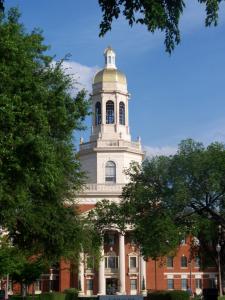
Because Marsden identifies the problem of pluralism, namely how to do it well, as the higher education moral question of the moment—and rightly so I think—I found the epilogue to this edition perplexing, even as I appreciated much about it. Entitled “An Unexpected Sequel: A Renaissance of Christian Academia,” the epilogue traces the rise of interest among communities of scholars broadly associated with evangelical Protestantism in giving concerted thought to relating their faith to their scholarship and teaching. It covers the late twentieth and early twenty-first centuries.
And unless I missed it, there is not a single woman or person of color mentioned among the many names discussed in the chapter. As a reminder, Marsden does integrate the contributions of diverse Christian (and non-Christian) scholars, by name, into earlier parts of the book. So he is not ignoring that part of the Christian scholarly community. But he misses an opportunity to analyze the increasing importance of these scholars to the conversation about Christian scholarship in the book’s conclusion.
Now some of this is because Marsden gave pride of place in his narrative to the discipline of philosophy, which is notorious for how slow it has been to incorporate scholars who are women and people of color. He did so in part because of the discipline’s chronological priority—particularly in its Calvin College incarnation—in framing the contemporary conversation on these issues. But in part I suspect he also did it out of humility, as the story could just as easily have been told through the lens of our discipline of history. Yet even if you told the story through our lens, Marsden’s generation of evangelical scholars would look a little more inclusive, but not much.
So I think we need to bring the story more robustly up to the present. The twenty-first century section of the chapter talks in more generalities, rather than in terms of particular figures like the earlier section. Some of this makes sense inasmuch as this was a time of flowering of Christian academic institutions. He shouts out Baylor—thanks, George!—as a relative success in thoughtfully integrating a distinctly Christian identity into a Protestant research university. And this section of the book also contains its single greatest passage: “By the 1990s, one of Notre Dame’s aspirations was to be ranked as high academically as it was in football. That goal was surpassed some years later, though due only partially to a rise in academic standing” (384). He likewise notes the increasing intellectual cooperation between Protestant and Catholic scholars, and not just because of our common experience with football fluctuations.
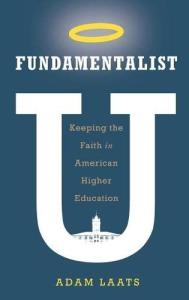 What is missing, I think, is an analysis of how this chapter and the previous chapter tie together. What do Christian scholars and institutions have to offer an American higher educational landscape that is right to emphasize the need for social diversity, but is crying out for a compelling vision of the good that crosses social categories? Marsden briefly notes the tension that faculty at CCCU institutions were generally more politically and socially diverse than donors. Because most evangelical Protestant traditions lack any sort of magisterium to say what is in and out of doctrinal bounds, as Adam Laats has argued in Fundamentalist U, these institutions always have, to a certain extent, to play instead to public opinion within the tribe, which makes moving the intellectual or political needle of the church tricky. By contrast, Marsden notes that “unlike more conservative Protestant constituencies and institutions, the outlooks of serious practicing Catholics come in a wide variety, from ultraconservative and traditionalist to highly liberal and progressive. These Catholics may worship together but seemingly disagree on just about everything else” (388).
What is missing, I think, is an analysis of how this chapter and the previous chapter tie together. What do Christian scholars and institutions have to offer an American higher educational landscape that is right to emphasize the need for social diversity, but is crying out for a compelling vision of the good that crosses social categories? Marsden briefly notes the tension that faculty at CCCU institutions were generally more politically and socially diverse than donors. Because most evangelical Protestant traditions lack any sort of magisterium to say what is in and out of doctrinal bounds, as Adam Laats has argued in Fundamentalist U, these institutions always have, to a certain extent, to play instead to public opinion within the tribe, which makes moving the intellectual or political needle of the church tricky. By contrast, Marsden notes that “unlike more conservative Protestant constituencies and institutions, the outlooks of serious practicing Catholics come in a wide variety, from ultraconservative and traditionalist to highly liberal and progressive. These Catholics may worship together but seemingly disagree on just about everything else” (388).
But as I have argued before in Fides et Historia, all branches of Christianity have the resources to do this: “[A]t least one of the reasons that there will be women and men from every nation, tribe, people, and language worshipping God together in the life to come (Rev 7:9) is that each sex and each culture has a unique experience of the effect of the gospel on our lives. Like facets of a diamond reflecting the divine image, we need to see and hear from one another in order to appreciate the fullness of the beauty of who God is.”[1]
Perhaps this is a way that Christian scholars and Christian institutions of higher education at our best can help to solve the problem of pluralism: by modeling it. If we are already platforming and listening to Christians different from us—be it in terms of sex, race, denomination, or politics—we can continue. If we see deficiencies here in our own lives, we can grow. Our common commitment to Christ enables us to do what it seems odd in the world to do: to disagree vehemently and still come together around a common purpose. Then the beautiful way that Marsden closes this edition may come true:
One lesson of the past would seem to be that Christian and other religiously based higher education is better off when it recognizes, as is easy to do in our postsecular age, that it is a minority enterprise in a richly diverse society. As such, it will not be able to impose its will on others, but, rather, its challenge will be to make itself so attractive in its practices and outlooks that, despite its inevitable imperfection, others will admire it and want to emulate some of its qualities. As Thomas Kuhn observes in The Structure of Scientific Revolutions, people are persuaded of the merits of an alternate view not so much by argument as by how that view works for its followers: “They can say: I don’t know how the proponents of the new view succeed, but I must learn whatever they are doing, it is clearly right” (389).
With permission, this post is adapted from my contribution to a roundtable on The Soul of the American University Revisited that will be published in a future issue of the journal Fides et Historia.
[1] Andrea L. Turpin, “Whose Stories We Tell and How We Tell Them: Honoring Christ in Choosing Topics and Analytical Lenses,” Roundtable on Christian Scholarship: For Such a Time as This, Fides et Historia 51:1 (Winter/Spring 2019): 94–99, 95–96.




